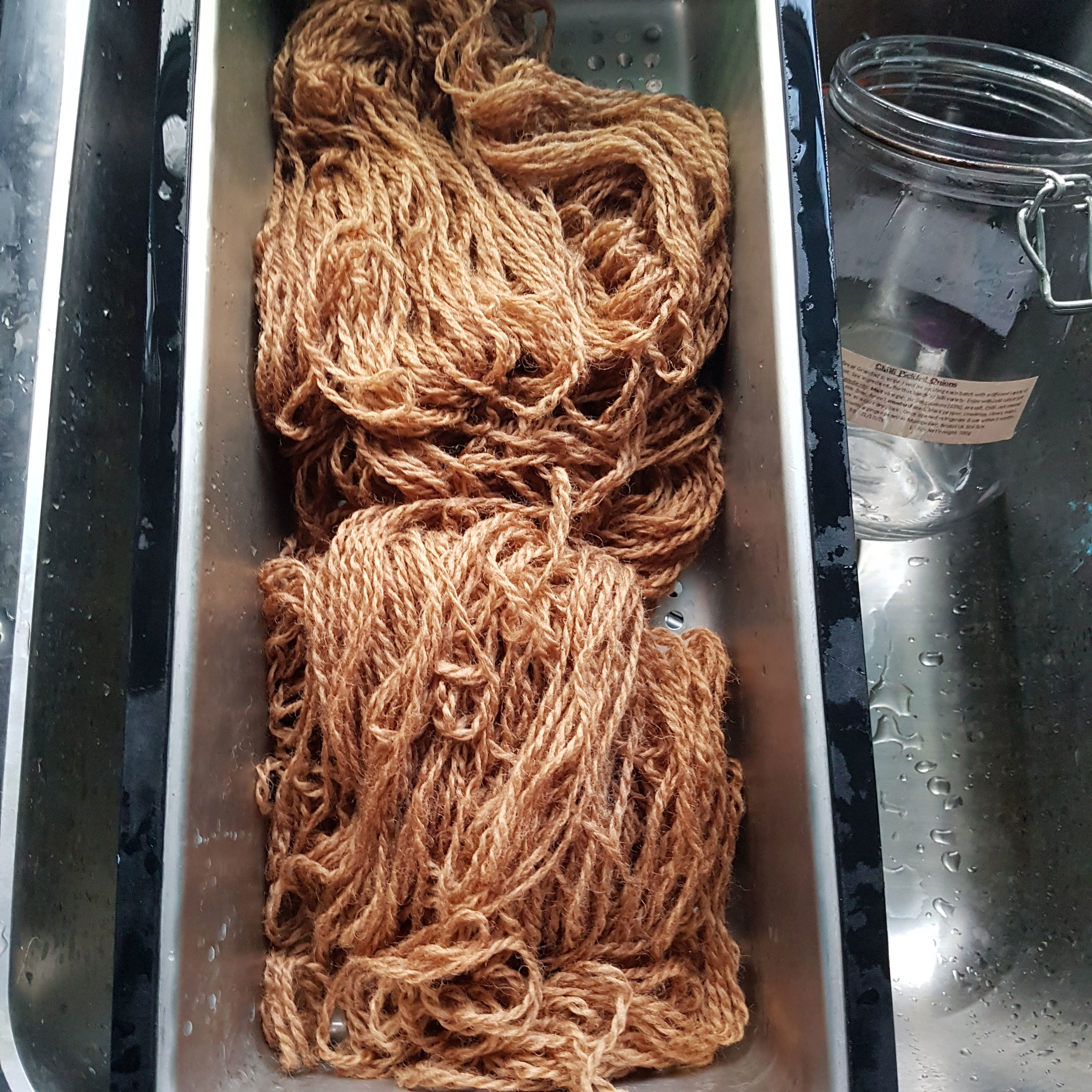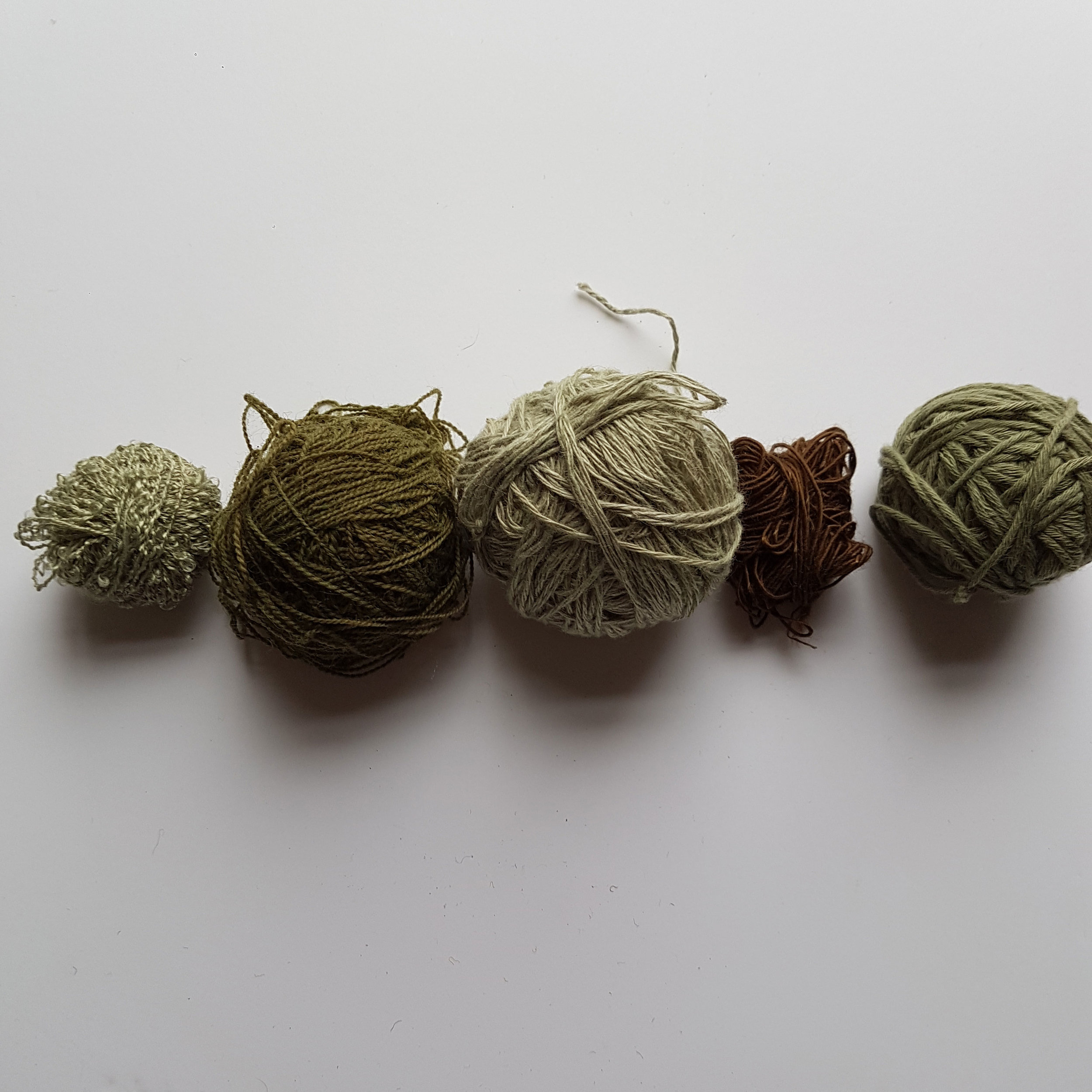Tannins in Natural Dye Plants
Note before reading: This blog was written in 2017, when I was studying for my MA (hence the Harvard referencing!). Where needed, I have edited these posts to correct any factual inaccuracies. This post was last edited Jan 2025.
Certain dye plants contain tannins, the word may be familiar as it is found in tea bags and wine! Tannin dyes are very colourfast, and do not require a mordant to adhere to the fibre. Ground oak galls are rich in tannins and can also be used as a mordant - galls are growths on oak trees that are caused by the gall wasp larvae.
"Mordants like alum do not attach very well to cotton and other plant fibres. This is where tannins are very useful as they attach easily to plant fibres. This process is called ‘galling’. The fibre that has been treated with tannin can then be mordanted with alum, the tannin forming an insoluble compound with the alum and natural dyes resulting in fast colours. Tannins are also used for turning animal skins into leather." Wild Colours, 2017 [online].
Walnuts husks are rich in tannins. As the festive season is approaching, I was able to buy some walnuts in their husks from the supermarket to use for creating a brown hue. 2025 addition - the fresh green outer husks of walnuts are a much more effective dye than the dried inner shells! See this later post - Dyeing with Fresh Walnuts.
I soaked the husks in cold water for 4 day,s then simmered the liquid to extract a deep brown liquid, before dyeing the unmordanted yarn - 100g of bulky superwash Shetland. The result is a little paler than I was hoping for, but still a good result considering it is a chemical free dyeing method.
The black walnut tree is native to Northern America and can be used to make a much deeper shade of brown, and even black with the correct modifier. I am not sure if I can source these in the UK, and whether it is eco-friendly to ship them across the world!
Tea also contains tannins. I was sampling dyeing with chlorophyllin to create green (left image above) and noticed that the dye bath wasn't exhausted from the first round of sampling, so I added some more yarn samples and started the process again, but this time adding a few tea bags.
All of the fibres absorbed some tannins, but some took it more than others. The wool paper yarn (fourth on the right) turned a very deep, rich brown, whereas the hemp and organic cotton (third and fifth, respectively) took on a pale, muddy green hue. The pure wool and banana fibre turned a rich forest green.
My tea/chlorophyllin dyeing wasn't executed in the most scientific of manners, and so I am interested in doing some more research and experimentation into the use of tannins in natural dyeing. Cardon's Natural Dyes (2007) has a whole chapter on them I am yet to read...
References:
Burns, R. (2017) Chlorophyllin Dye 1-2. (Own Collection)
Burns, R. (2017) Walnut Dye 1-2. (Own Collection)
Cardon, D. (2007) Natural Dyes. Archetype: London.
Wild Colours. (2017) Using Gallnut extract [Online] Available from: http://www.wildcolours.co.uk/html/gallnut_extract.html [Accessed 9 November 2017]




